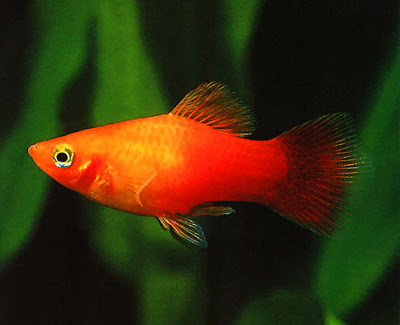Types of Algae Eaters for Freshwater Tanks: African Chicild
Types of
Algae Eaters for Freshwater Tanks: African Chicild – African cichlids encompass the largest
genus of the cichlid family, with over 100 species. Male and female African
cichlids will live together in the exact same tank; they'll do nicely also with
other territorial fish for example green spotted puffers and Leopard
ctenopomas. Ideal tank mates are also made by catfish and will aid in
maintaining your tank clean.
 |
Photo copyright from tropicalfishsite.com
|
Types of Algae Eaters for Freshwater Tanks: African Chicild
If I forgot a word to
explain this stuff, please forgive me. In case the reason for its existence
isn’t properly identified, of getting it to leave, your efforts will most
likely be unsuccessful. African Cichlids aquarium algae is generally due to
underlying water quality issues.
Since there are really
so many varieties to select from, African Cichlids are definitely one of the
most used of all aquarium fish. Add to extroverted characters this their
fascinating behaviours, and also the fact their popularity is no surprise, and
that they're the most brilliant of freshwater fish.
There are several kinds
of African cichlids. There are several types of African cichlids.
African cichlids
encompass the biggest genus of the cichlid family, with well over 100 species.
Female African cichlids and male will live together in an identical tank;
they'll do nicely also with other territorial fish such as Leopard ctenopomas
and green spotted puffers. Catfish can assist in maintaining your tank clean
and also make perfect tank mates.
Habitat Origins
An African cichlid needs
plenty of room making a tank that is 55 gallons or larger a must, to swim and
grow. The water in the tank must be hardy like river water, so maintaining a pH
between 8.2 and 8.4 is perfect. The pH should at no time be allowed to drop
below 7.0. The water temperature has to be between 74 and 82 degrees. Place
lots of plants and ornamentation in the tank to enable each fish hiding places,
but be sure to leave lots of open room for swimming. This is best achieved by
setting plants and decor along the back and side walls of the tank.
Their native lakes are
usually quite rocky so it's a good idea for tank set up to mimic this. Provide
as many hiding areas (crevices & caves) as possible. Decorative stone
standard rocks, pieces of coral, and also clay pots could be used. Ensure
everything is scrubbed clean and sterilized. never use compound!
Care
There is no substitute
for regular, routine maintenance. It really is a “must do”. Cleaning the
interior of your aquarium
Glass should be done.
Added alga management could be needed if you are experiencing free floating
oxygen in n your aquarium water. It will be helped by the use of a UV
sterilizer . Using a phosphate based compound reduce algae growth and can
improve water quality.
A natural approach to
alga direction is the best choice to controlling algae. If necessary, this may
be accomplished by regular water changes, filter maintenance, and phosphate
media.
Procreation
Africans aren't without
their challenges to the aquarist, nonetheless. They could be aggressive
(especially during breeding and spawning), predatory, and damaging. Supplying
the fish adequate hiding places can tone this behavior down.
Of each of their
behaviours, parenting is what cichlids are best known for. Most abandoned and
deposit their eggs carefully on a hard surface in place of scattered. The eggs
are then safeguarded until hatching. Most are mouth brooding species, the
females carry the eggs and fry in their own mouths to safeguard them.
Illnesses
A healthy African
cichlid will have even coloring, a good appetite and clear eyes. Other signals
of sickness contain a loss of hunger, wandering swimming and lack of coloring.



Komentar
Posting Komentar